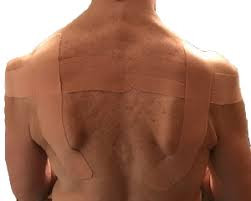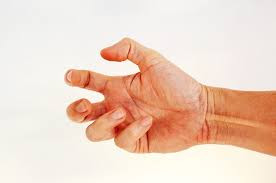Definition
Cervical dystonia (spasmodic torticollis, neck dystonia) is a condition where the neck muscles contract involuntarily, causing the neck to twist abnormally. This is a rare condition and affects women more often than men. Symptoms usually start gradually and reach a point where they no longer worsen. Cervical dystonia is the most common type of dystonia.
Causes
In most cases, the exact cause of cervical dystonia is unknown. Some possible causes in certain cases include:
- Neurological disorders such as Parkinson's disease.
- Medications that inhibit dopamine, such as some antipsychotics (used to manage symptoms of delusion or hallucination).
- Injuries to the head, neck, or shoulders.
- Genetic mutations, as 10-25% of people with cervical dystonia have a family history of the condition.
- Psychological issues. In some cases, cervical dystonia occurs at birth. Environmental factors can also influence its occurrence.
Risk factor
Several factors can increase the risk of cervical dystonia, including:
- Age: Although this condition can appear in various age groups, cervical dystonia is most common between the ages of 30-50.
- Gender: Women are more likely to experience cervical dystonia than men.
- Family history: Having a close family member with cervical dystonia or other dystonias increases your risk.
Symptoms
Symptoms can vary in each individual and range from mild to severe. The most common symptom of cervical dystonia is pain. Pain is usually found in the same direction as the head's turning direction and can radiate to new areas. The most common abnormal movement in cervical dystonia is the rotation of the head and chin to the side due to neck muscle contractions, a condition called torticollis.
Other neck movements may include:
- Head tilting forward and chin down (anterocollis)
- Head tilting back and chin up (retrocollis)
- Neck tilting to the side with the ear touching the shoulder (laterocollis) Stress or excitement can worsen the symptoms. Additionally, some physical positions can trigger symptoms. Symptoms typically begin gradually and worsen over 1-5 years, then stabilize.
Other symptoms of cervical dystonia may include:
- Raised shoulders.
- Tremors in the hands.
- Headaches.
- Head tremors occur in 50% of people with cervical dystonia.
- Enlarged neck muscles occur in about 75% of people with cervical dystonia.
Diagnosis
Cervical dystonia can be diagnosed through the symptoms experienced by the patient and a neurological examination. Additionally, the doctor may recommend blood tests or magnetic resonance imaging (MRI) to rule out other medical conditions causing cervical dystonia.
Management
Biofeedback
Biofeedback is an alternative therapy using electronic instruments to measure variables such as muscle activity, blood flow, and brain waves. This information is then communicated to the person with cervical dystonia to help them manage involuntary movements.
Surgery
If conservative therapy is not effective, surgery can be an option for therapy. Your surgery can be in the form of cutting nerves in the brain that affect movements that are not realized in the head. After surgery, the muscles will weaken or become permanently paralyzed. This thread has side effects. Not only that, the emergence of movements that the patient does not realize can also occur again.
Neuromodulation
Deep brain stimulation, also known as neuromodulation, is a recent therapy. This procedure involves drilling into the skull and inserting electrical leads into the brain. A small battery that controls the lead is placed near the collarbone, and a wire under the skin connects the battery to the lead. A remote control can be used to deliver electrical currents related to neck and head movements.
Physical Therapy
Physical therapy includes massage to relax the neck and shoulders, as well as stretching and strengthening exercises. Physical therapists can also teach you exercises you can safely perform at home to relieve symptoms and strengthen your muscles. Touching certain areas can stop spasms (muscle strength), such as touching the opposite side of the face, chin, or cheek, or touching the back of the head. This is effective when done on the same side, although its effectiveness may decrease over time.
Counseling
Counseling can help reduce stress caused by or contributing to the condition. Stress can trigger cervical dystonia relapses. Patients with cervical dystonia may feel isolated and depressed due to difficulty performing daily activities. Managing cervical dystonia often involves a multidisciplinary approach, including neurologists, psychologists, and psychiatrists.
Pain Management
Pain is the primary complaint in cervical dystonia. Everyone responds differently to medications and their combinations. Initial pain management can involve botulinum toxin injections into the neck muscles every 3-4 months to reduce painful muscle contractions. This therapy is effective in about 75% of people with cervical dystonia. Electromyography (EMG) may be performed to determine the muscles to be injected with botulinum toxin. Other medications can alleviate dystonia symptoms, starting at low doses and increasing until symptoms are controlled or side effects become intolerable. These medications are effective in about 25-33% of cervical dystonia patients. Discuss with your doctor to choose the appropriate medication for treating cervical dystonia.
Complications
In some cases, involuntary muscle spasms from cervical dystonia can spread to areas near the neck, such as the face, jaw, arms, and body. People with cervical dystonia may develop bone spurs that can narrow the spinal canal, causing tingling, numbness, and weakness in the arms, hands, legs, or feet.
Prevention
Since the cause of cervical dystonia is generally unknown, effective prevention remains a mystery and requires further research. However, if you have a close family member with cervical dystonia, you are at higher risk of developing the condition. Recognizing symptoms early can help you receive timely therapy.
When to see a doctor?
Visit a neurologist if you suspect cervical dystonia in yourself or others. While it cannot be cured, its symptoms can be managed. Symptoms may stop without any therapy, but this usually does not last long. Cervical dystonia can disrupt daily activities, making symptom control essential to restoring daily function.
Looking for more information about other diseases? Click here!
- dr Hanifa Rahma
Cervical Dystonia - Brain, Spinal Cord, and Nerve Disorders - MSD Manual Consumer Version. MSD Manual Consumer Version. (2022). Retrieved 28 September 2022, from https://www.msdmanuals.com/home/brain,-spinal-cord,-and-nerve-disorders/movement-disorders/cervical-dystonia.
Cervical dystonia - Symptoms and causes. Mayo Clinic. (2021). Retrieved 28 September 2022, from https://www.mayoclinic.org/diseases-conditions/cervical-dystonia/symptoms-causes/syc-20354123.
Hecht, M., & Han, S. (2019). Cervical Dystonia: Causes, Symptoms, and Treatment. Healthline. Retrieved 28 September 2022, from https://www.healthline.com/health/dr/cervical-dystonia.












